|
New Shoes. By Sara Varon. First Second Books, March 2018. Hardcover, 208 pages. ISBN 978-1596439207. $17.99. Book design by Danielle Ceccolini and Sara Varon. New Shoes, a genial, unlikely fable, follows a cobbler named Francis who wants more than anything to make the perfect pair of shoes for his favorite singer, a pop star who is coming to his town. To that end, he hopes to enlist his traveling friend, Nigel, to secure the needed supplies—but Nigel, it turns out, is missing. So Francis, aided by another friend, Rhoda, embarks on a quest to get the supplies himself (and find Nigel). The thing is, Francis is a donkey, Nigel is a squirrel monkey, Rhoda is a macaw, and the singer, Miss Manatee, is just that. New Shoes is an animal fable—and not in the purely metaphorical sense of, say, Spiegelman’s Maus, in which human characters wear mask-like animal faces. No, these animals are meant to be animals, even though they’re anthromorphized. Francis, despite wearing clothes and shoes, is emphatically a donkey. Rhoda is a bird (she flies). And so on. In this world, varied animalness is the point. Once again, Sara Varon (Bake Sale, Robot Dreams, Chicken and Cat, Sweaterweather, etc.) has created a funny animal comic that is, yes, funny, but more than that. New Shoes takes place in a tropical world inspired by Guyana. Francis and Rhoda’s quest entails journeying into “the jungle,” i.e. equatorial rainforest, and the book lovingly details Guyanese flora and fauna. Varon gives labels for myriad critters: black curassow, golden-handed tamarin, three-toed sloth, and so on. Ditto for plants: cecropia, philodendron, bromeliad. In other words, the book packs in a lot of zoological and botanical information. More than that, New Shoes implicitly reflects Guyanese culture: an Anglophone Caribbean mix with a complex colonial history and diverse population. Signs in Francis’s village are in English, village buildings are small, colorful, and individual, and Varon’s myriad animal types may stand in, allegorically, for Guyana’s mingling of East Indian, African, Amerindian, and other peoples. Miss Manatee, “the River Queen,” is a calypso singer, and listening to calypso on phonograph records seems to be a cultural constant (record players are an important prop throughout). Varon’s version of Guyana is perhaps utopian but based on direct experience: her husband, John Douglas, former boxer and Olympian (1996), is from Guyana, and her visits there, specifically to the town of Linden, seem to have shaped if not inspired the whole book. The specific cultural and geographical influences of Guyana make New Shoes stand out among Varon’s animal tales—and the characters’ varied animalness implicitly celebrates Guyanese diversity. Thus New Shoes espouses cooperation and harmony-in-difference without dealing explicitly with race, ethnicity, or postcoloniality. This charming fable rests on a complex, if largely implied, cultural foundation. I was struck by the book’s depiction of labor and economy. Even as it extols friendship and community, New Shoes focuses on acts of exchange: goods for goods, goods for work, and work for work. Yet money plays no role; barter and trade are everything. Rhoda agrees to help Francis on his quest in return for a pair of shoes. Francis offers bread to passing herons, who in return counsel him to seek help from some capybara. Later, Francis trades bread to the capybara and some river otters in return for swimming lessons and advice. Later still, he settles a debt with Harriet, a jaguar, by offering her his guidebook to rainforest animals, and then the two make a further exchange: some of Harriet’s plants, and advice on how to take care of them, in return for a pair of Francis’s shoes. While the book also depicts acts of spontaneous, uncompensated kindness—say, a neighbor helping a neighbor—much of its action involves establishing reciprocity and trust through barter. Tellingly, these exchanges are not merely economic but also build goodwill and community. If some characters seem altruistic, others, by contrast, appear self-interested—yet all of them come together civilly through the act of trading. What’s more, the worst offense in the book turns out to be thievery, when a character decides to take something for nothing rather than making an honest trade. Varon’s utopia, then, is not without practical considerations of trade and work, but couches those in terms of communal ethos rather than capital. New Shoes could spark some fascinating exchanges with young readers about use value, exchange value, and perhaps even alternatives to commodity capitalism! Varon’s work has a distinctive charm. Her stories, as New Shoes amply demonstrates, tend to be about not only moving the plot forward but also taking an interest in the world, imparting information about geography, culture, or beloved pastimes. They represent the work and the pleasure of learning. At the same time, Varon uses animals and other “nonhuman” characters to convey feelings of friendship, love, and loss (most piercingly, I think, in her breakthrough book Robot Dreams). Along the way, she scatters moments of droll, deadpan humor: Varon's telltale graphic style is very readable. Her character designs are distinct and unmistakable; every character looks different from every other one (and I can see some influences she has cited, including Jay Ward and William Steig). The figures are clean and shadowless, yet outlined by robust brush-inking. Her bright, unshaded pages boast discrete forms and solid, eye-popping colors, yet also a complex mixing of hues (as in the varied shades of green that make up New Shoes’s rainforest). Inked on Bristol board but then colored in Photoshop (as is Varon's SOP), New Shoes happily blends old-school and digital methods, combining springy linework with subtle coloring. Layout-wise, Varon alternates between framed and unframed images, favoring big, open spreads and full bleeds. Often, single images take up a page or spread; alternately, Varon may go for a page of two or three (or, very rarely, four) panels. Clarity and momentum are all, and New Shoes fairly carries the reader along. Sara Varon has become one of First Second’s signature authors. I had the privilege of interviewing her, back in 2009, at the International Comic Arts Forum in Chicago, and it has been a pleasure to see more and more of her work—work that explores friendship and community for the benefit of young and old readers alike. New Shoes charmed me right off, but keeps growing in my estimation as I think about it—another delightful, subtle, low-key triumph. First Second provided a review copy of this book.
0 Comments
|
Archives
June 2024
|

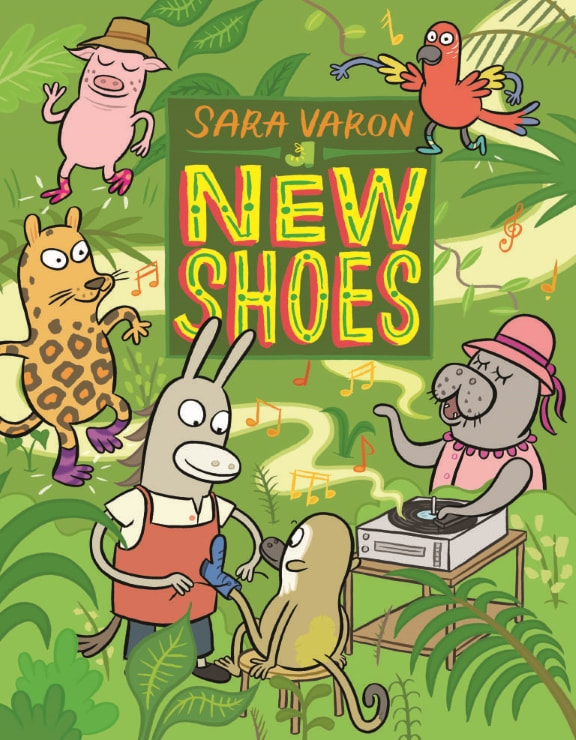
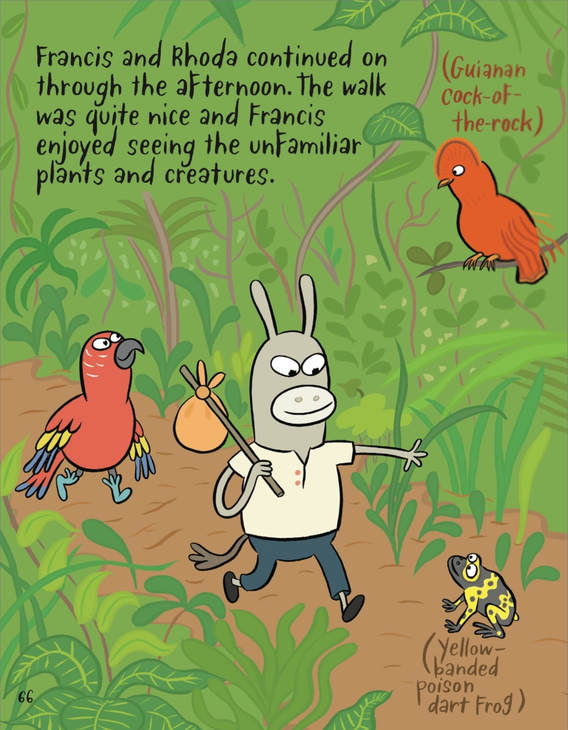
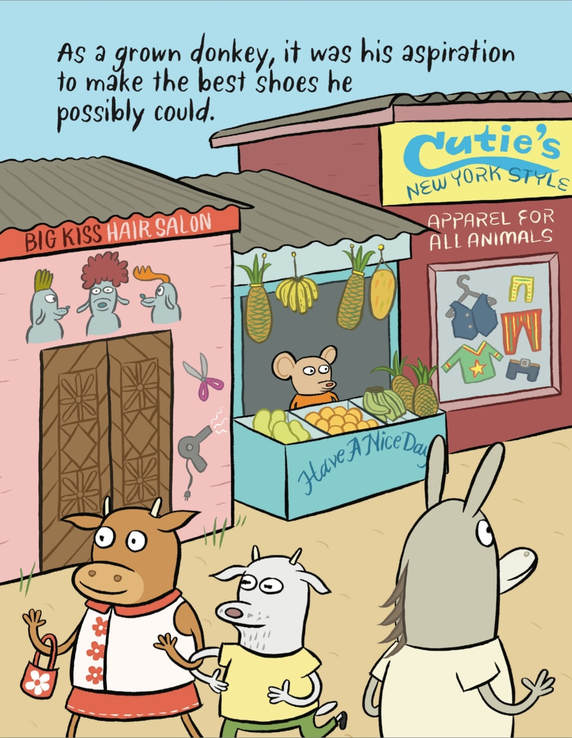
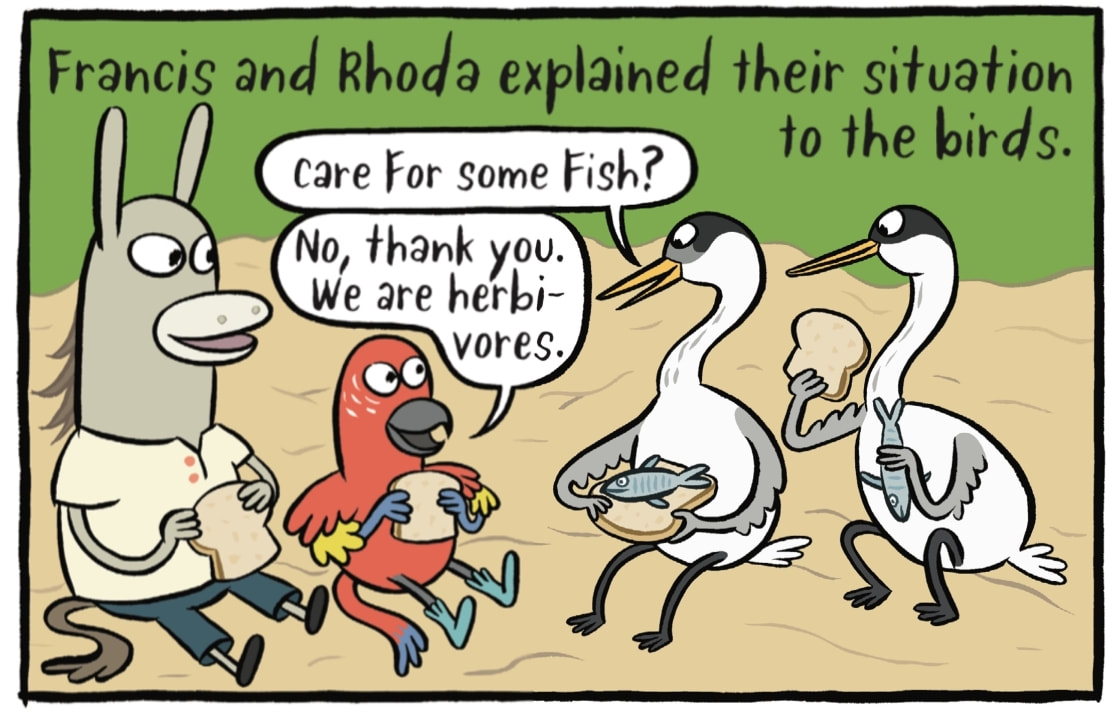
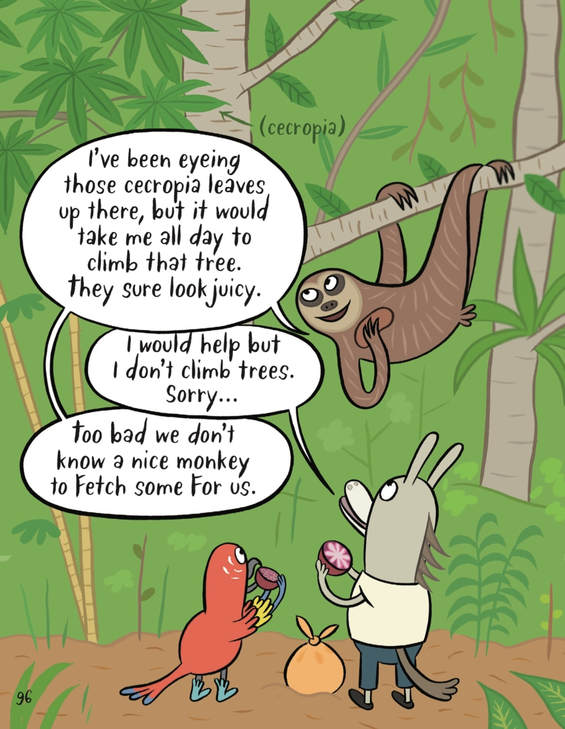
 RSS Feed
RSS Feed
